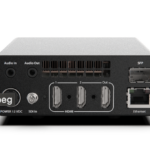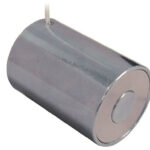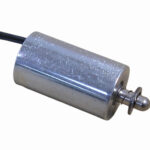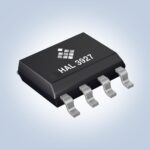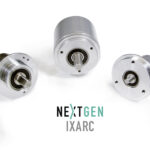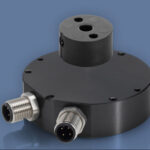Researchers at Tokyo University of Science (TUS) have developed a flexible paper-based sensor composed of nanocellulose and zinc oxide (ZnO) nanoparticles that operate like the human eyes and brain. The sensor is energy-efficient, responds to optical input in real-time, and is both flexible and easy to dispose of, making it ideal for health monitoring applications. […]
Encoder
Portable, 4K HDMI encoder offers multi-channel support
VITEC is launching the MGW Diamond-H 4K HDMI encoder to further enhance its broad portfolio of HEVC encode and decode products. The MGW Diamond-H, a portable 4K HDMI Encoder is a significant addition to VITEC’s portable HEVC encoder product line, setting a new standard for quality, efficiency, and integration. With the ability to encode up […]
Powerful compact, low-cost electromagnets
A powerful series of compact, low-cost electromagnets has been released by Magnetic Sensor Systems (MSS). Their E-22-150 Series of Tubular Electromagnets 1.5 in. in diameter x 2.15 in. feature 19 different windings to select from based on the duty cycle and holding force requirements of the application. E-22-150 Electromagnets are immediately available off-the-shelf in sample […]
LVDTs provide critical measurements for steam turbines
Hermetically-sealed linear position sensors from NewTek Sensor Solutions tolerate the high temperatures and vibrations of steam turbines to deliver accurate and reliable position feedback on the position of the governor and throttle valves. Their high measurement accuracy also makes them ideal for monitoring turbine shell expansion and bearing vibrations as part of process control systems. […]
Intro to panel mount encoders
In the domain of electrical engineering, panel mount encoders play a pivotal role in precision measurement and control systems, influencing the performance and accuracy of a diverse range of applications. Panel mount encoders fall under the category of rotary encoders. These devices are physically affixed to panels and find primary utility in human interface applications. […]
Pull type solenoids features 16 standard models
The S-63-38 Series of Pull Type Tubular Solenoids has been released by Magnetic Sensor Systems (MSS). This series of 0.38 in. diameter solenoids features 16 standard off-the-shelf solenoids to select from based on the Voltage, Duty Cycle, Force, and Stroke requirement of the user. These miniature solenoids featuring a 0.38 in. diameter have a 0.66 […]
Magnetic-field position sensor measures in three axes
TDK Corporation announces the portfolio expansion of its Micronas direct-angle Hall-effect sensor family with the new HAL 3927* sensor for automotive and industrial applications. HAL 3927 features a linear, ratiometric analog output with integrated wire-break detection as well as an SAE J2716 compliant SENT interface according to rev. 4. Samples are already available. The start of production […]
New generation of absolute encoders feature newly-developed ASIC
Encoder-maker POSITAL has introduced a major update to its portfolio of IXARC magnetic encoders. While incremental encoders based on the new technology platform have been available for several months, the company is now rolling out a new generation of single and multiturn absolute encoders. These new encoders come with improved performance (up to 18-bit resolution), […]
Rotary potentiometer offered in single, dual-gauge, and dual-gang + on-off switch models
CUI Devices’ Motion & Control Group announced the introduction of a new rotary potentiometer series offering single or dual-gang models as well as dual-gang options with an on-off switch. The PTN16 series is housed in a 16.5 mm package with shaft lengths of 15, 20, 25, or 30 mm and D-cut or knurled shaft styles. […]
Heavy-duty sensors designed for extreme environment applications
Novotechnik, U.S. announces the RFX 6900 Series of touchless rotary sensors. These magnetic sensors are designed for use in mobile, safety-related, and extreme environment applications. Now with custom ranges available. The housing of the RFX 6900 Series is anodized aluminum and sealed to IP 67 or IP 69K, depending on the version. The series conforms […]


